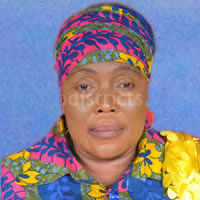Health
The Municipality had only one doctor as at the end of 2014. The doctor/population ratio stood at 1:152,398. One and sixty (160) nurses were supposed to be manning the fifteen health facilities in the Municipality and twenty-five of them went to school. The nurse/population ratio therefore stood at 1:1129 in 2017.
Health and Nutrition
The provision of quality health care remains the goal of the Municipal Assembly. Significant progress has been made over the years though much still has to be done to improve access to quality health care delivery in the Municipality.
Health Infrastructure
There are three operational CHPS zones at Dipali, Guntingli and Kuldalnaali which are all fully operational and delivering health services to the people.
Health centres are located in Nanton to the East and Pong Tamale and Diare to the north. Five clinics are located at Moglaa, janjori-Kukuo, Tampion, Zoggu and Pigu.
Diseases Situation
Malaria remains the number one disease for OPD cases (see table below on malaria cases). Some of the actions being pursued are the supply of treated mosquito nets especially to pregnant women There is also an on-going Indoor Residual Spraying of insecticide as a malaria control strategy in the Municipality.
Mortality
Tremendous efforts have been made by the Municipality to reduce neonatal, infant, under five (5) and maternal deaths. Neonatal deaths at the institutional level fell from seven (7) in 2012 to two (2) in 2013. However, infant deaths both at institutional and community levels reduced from sixty-five (65) to eighteen (18) in 2013.
Under five mortality also reduced from one hundred and fourteen (114) in 2012 to thirty-eight in 2013 and only one (1) maternal death was recorded in 2013. The decline in the maternal deaths could be explained by an increase in antenatal attendance and increases in skilled deliveries. Skilled deliveries increased from 50.85% in 2010 to 65.5% in 2013.. The increase in skilled deliveries is attributed to the skills training of midwives, the encouragement given to the TBAs to refer cases to health facilities in return for a bar of key soap and the introduction of free ITNs after delivery.
Family Planning
The high population growth rate of 3%, higher than the national rate of 2.6% is partly due to the low Family planning acceptance rate. The acceptance rate reduced from 5,070 to 3,488. The low acceptable rate is due to cultural practices and also most women start family planning education at post natal instead of during antenatal.
Nutrition In 2013, 12,211 children were sent for weighing and out of this number, 0.4% was severely malnourished, 13.7% were moderately malnourished, 82.7% were normal, 3.1% were overweight, and 0.2% was obese. Indicators on nutrition depict an improvement in nutrition of children and mothers in the Municipality.
Psychiatry Cases
In 2013, epilepsy cases seen and managed were 65 out which males accounted for 18, females 22 and children 25. Psychosis cases seen and managed in 2013 were 16 out of which 10 were males, 3 females and 3 children.
HIV/AIDS cases are alarming at the municipality due to emigration to Tamale, Kumasi and Accra for Kayaye. Seventy-three (73), one hundred and twenty-one (121), one hundred and seventy-two (172) cases were recorded in 2014, 2015, and 2016 respectively. However, the figure dropped to one hundred and fourteen (114) cases, which is still alarming.
In 2014, 0.2% of children weighed were severely malnourished and in 2015 the figure increased to 0.8% and reduced to 0.4% in 2016. 1.2% was moderately malnourished in 2017 and this increased astronomically to 15% in 2015 and reduced slightly to 13.7% in 2016. 2014 witnessed a percentage overweight of 1.2 which increased to 4.3% in 2015 and decreased to 3.1% in 2017. Obese children accounted for 0.1% of the children weighed in 2014. In 2015 the figure increased to 0.4% and reduced to 0.2% in 2017.
Vitamin A coverage for children 0-69 months increased from 3,324 in 2014 by 143.08% to 8,080 in 2017.
The number of psychiatric cases seen and managed in 2014 was 70 and this reduced to 51 in 2016 and then increased to 104 in 2017. The number of male psychiatric cases in 2014 was 32 and this reduced to 19 in 2015 and then increased to 39 in 2017. The number of female cases in 2014 was SAVELUGU NANTON MUNICIPAL MEDIUM TERM DEVELOPMENT PLAN FOR 2018-2021 Page 86 and this remained the same in 2015 and then increased to 35 in 2016. The cases of children were 21 in 2010 and this reduced to 15 in 2015 and then went up to 30 in 2017.
Health Staff
- 60 Youth registered for employment as Community Policing/Protection Volunteers
- 40 Youth Are being registered to benefit from an (ICT) Information Communication Technology training.
- 60 persons will be considered under Waste and Sanitation Management
NHIS
The National Health Insurance Scheme as we are all aware is considered as a humane approach to access to health care as against the Cash & Carry where patients deposit or pay some amount of money, before, during and after treatment.
Presently, the Savelugu Mutual Health Insurance Scheme has the under listed statistics to its credit: The Scheme has registered a total of 13,318 persons, 2,823 of this figure are of the informal sector, 873 are SSNIT contributors whilst 48 are SSNIT pensioneers. The rest are 4,641 under 18 years, 1,955 Aged 2,978 are indigents.
A total of 6,920 ID Cards have been issued so far with 884 going to the exempt category and 5,406 to the informal sector. Hon Presiding Member, ladies and gentlemen, I must admit that there are still some institutional and logistical problems militating against the smooth implementation of the programme. This notwithstanding I think some modest achievements have been chalked which can be documented as best practices as far as the implementation of the programme is concerned.
Date Created : 11/18/2017 8:13:29 AM





 facebook
facebook twitter
twitter Youtube
Youtube TOLL FREE 0800 430 430
TOLL FREE 0800 430 430 +233 593 831 280
+233 593 831 280 GPS: GE-231-4383
GPS: GE-231-4383 info@ghanadistricts.com
info@ghanadistricts.com Box GP1044, Accra, Ghana
Box GP1044, Accra, Ghana